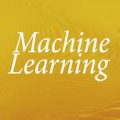
Prostate cancer is the second deadliest cancer for American men. While Magnetic Resonance Imaging (MRI) is increasingly used to guide targeted biopsies for prostate cancer diagnosis, its utility remains limited due to high rates of false positives and false negatives as well as low inter-reader agreements. Machine learning methods to detect and localize cancer on prostate MRI can help standardize radiologist interpretations. However, existing machine learning methods vary not only in model architecture, but also in the ground truth labeling strategies used for model training. In this study, we compare different labeling strategies, namely, pathology-confirmed radiologist labels, pathologist labels on whole-mount histopathology images, and lesion-level and pixel-level digital pathologist labels (previously validated deep learning algorithm on histopathology images to predict pixel-level Gleason patterns) on whole-mount histopathology images. We analyse the effects these labels have on the performance of the trained machine learning models. Our experiments show that (1) radiologist labels and models trained with them can miss cancers, or underestimate cancer extent, (2) digital pathologist labels and models trained with them have high concordance with pathologist labels, and (3) models trained with digital pathologist labels achieve the best performance in prostate cancer detection in two different cohorts with different disease distributions, irrespective of the model architecture used. Digital pathologist labels can reduce challenges associated with human annotations, including labor, time, inter- and intra-reader variability, and can help bridge the gap between prostate radiology and pathology by enabling the training of reliable machine learning models to detect and localize prostate cancer on MRI.
翻译:美国男子的第二大致命癌症是前列腺癌。磁共振动成像(MRI)越来越多地用于指导前列腺癌诊断的定向生物监测,但由于假正数和假负数的高比率以及低读数协议,其效用仍然有限。前列腺癌检测和定位前列腺癌的机器学习方法可以帮助实现放射学家解释的标准化。然而,现有的机器学习方法不仅在模型架构中有所不同,而且在用于模型培训的地面真相标签战略中也各不相同。在这项研究中,我们比较不同的标签战略,即病理学固存的放射学家标签、全部病理病理学图像上的病理病理病理病理病理病理病理病理病理病理病理病理病理病理病理病理病理病理病理病理病理的图,以及高部病理病理病理病理病理病理病理病理病理病理病理病理病理病理病理病理病理病理病理病理病理病理学的原始分析法。我们分析了这些病理学方法方法。我们分析这些标签方法不仅不仅在模型上也不同,我们分析这些病理学理学理学理学理学理学系,我们分析这些病理学系, 也分析方法可以分析这些病理学研究研究模型模型模型模型可以降低。我们分析模型和研究模型分析模型模型分析模型分析模型分析模型分析模型。我们研究模型可以分析研究模型分析这些病理学 。我们研究模型可以分析这些病理学 。实验实验实验显示模型可以分析这些病理学 。我们分析这些病理学 。我们实验实验实验表明(1), 。我们实验表明(1) 。和模型实验实验实验实验家病理学家所所所所教, 。和模型 和模型中教學家病理學家病理学家所所所所所所教學家病理學家病理學家病理學家病理學 。和模型 。和模型 。和模型所所所所所所所所所教學家病理學家病理學家的比 。和模型所教學家病理學家病理學,, 。我們所 。我們所教學家病理學家病理


